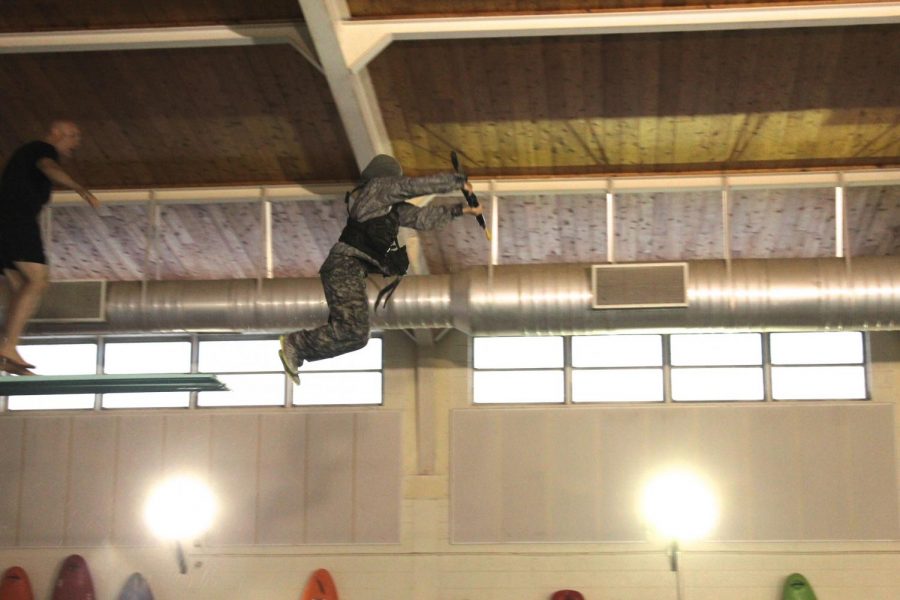NMSU’s Army ROTC cadets undergo combat water survival training

More stories from Marianne Salas
New Mexico State University’s Army cadets must undergo Combat Water Survival Training once per semester.
Captain Jose Garcia Chavez, an Army veteran with nearly 20 years of experience in the field, said that the strenuous water exercises are for the cadets to show confidence in the water, as well as to distinguish the swimmers from the non-swimmers. He added that water training is many times key to survival.
“Lots of soldiers have drowned,” he says. “We need to make sure our cadets feel comfortable in the water.”
Paola Estrada, a student-cadet, said she struggled to swim with all the gear she was required to wear.
“It’s as if someone is pulling you down,” Estrada, 19, said. “The vest, our weapon, everything adds on.”
The wake-up call is at 6 a.m., followed by a 25-meter swim, a drowning simulation while in full uniform, a test in which cadets must jump off a 10-foot diving board, blindfolded and in uniform, all while holding a weapon.
After a safety brief, instruction and a demonstration on each event, the morning begins with the cadets lined up at the edge of the pool.
The cadets then break out into three lines, two of which force the cadets to dive into the pool feet-first, weapon and vest strapped on. The cadet’s goal is to remove their equipment before drowning.
Cadets in the third line are blindfolded and must jump off the high-dive while holding their weapon out in front of them. They are told repeatedly to exhale and remain calm even when the situation seems dire.
For Kelsie White, a sophomore and a member of the Ranger Challenge Team, the high-dive is her favorite event. White said the difference between NMSU’s Army cadets and the Ranger Challenge Team is that the latter is more demanding.
“You have to be willing to take an extra step,” White said.
The Ranger Challenge Team must pass a physical fitness test of 240 or above, and maintain a GPA of 3.0. They also participate in the Baton Death March at White Sands every year in April.
On the opposite side of the pool, the cadets begin to take off their uniform, preparing to make a floatation device out of it. Though a majority use their pants, it is noted that their top may be used as well.
For their final event, the regular cadets must tread water for ten minutes. The Ranger Challenge Team still has one more to go.
After treading water, the Ranger Challenge Team prepares to test their poncho rafts. If assembled correctly, as one cadet swims forward and the other pushes, the equipment should remain floating. If done wrong, the raft becomes heavy, until it eventually sinks.
Chavez said the cadets did fairly well in their performance, which is not always common at the beginning of the year.
“While some need improvement, this group’s done better than last year’s. For the freshmen especially, it takes some getting used to,” Chavez said. “In real life, outside of a controlled environment, it really is sink or swim.”

Marianne Salas is a senior at NMSU pursuing a double-major in English and Government with a supplementary major in Law & Society. She will be attending...

